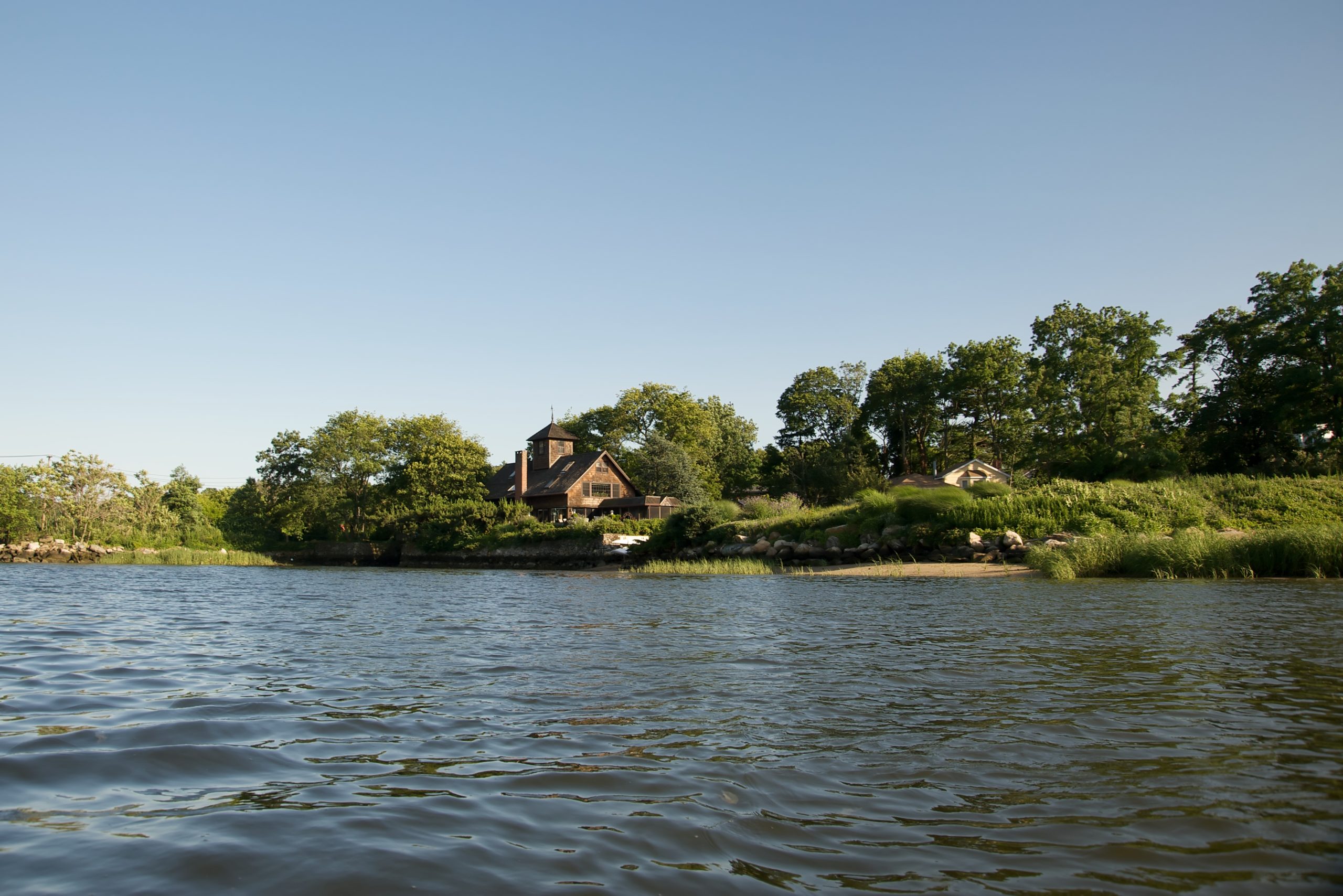Manhasset Bay and Hempstead Harbor are part of an area that the U.S. Army Corps of Engineers has named “high-risk” for future storm flooding and is studying prevention plans for.
The majority of the options that the Corps has proposed, however, would likely induce flooding on Long Island’s North Shore in an effort to prevent it in New York City, said local environmental activists who attended a meeting last week about the study.
The corps study considers the installation of storm surge barriers intended to prevent flooding on the inside.
But two of the potential barriers leave Northern Nassau County on the outside, where water would build up and potentially induce flooding, said Eric Swenson, executive director for the Hempstead Harbor Protection Committee.
“That water, because it can’t go into New York City, is going to go into the communities behind those gates, which are Manhasset Bay, Hempstead Harbor and Oyster Bay…and we don’t know how far east it will go,” Swenson said.
The region of New Jersey and New York that the corps is studying includes over 900 miles of shoreline, ranging from mid-New Jersey up the Hudson River to Troy, New York, according to the Corps fact sheet. It includes all of New York City as well as a western portion of Long Island.
The corps released six options of ways to address the New York and New Jersey flood threat in a report it published last summer. The options range from taking no action to installing storm surge barriers or sea walls.
Four of them include at least one of two barriers that could impact the Long Island Sound, one called the Throgs Neck Gate and the other called the Pelham Gate.
At a public meeting in Kings Point Tuesday, a representative said the corps would find ways to mitigate induced flooding beyond the barriers if it were to install them, said Save the Sound Director Tracy Brown.
One option the representative mentioned was sea walls along the Long Island coast, she said. The other he offered, Brown said, was taking property along the coast.
A storm surge barrier could harm the Long Island Sound in other ways beyond induced flooding, Swenson said.
“There’s environmental issues with changing the whole flow of the sound and what it does to things like salinity and fish passage and water temperature and bacteria in the water, heavy metals in the water,” he said. “Tidal gates are shown to have those kinds of impacts.”
The corps is accepting public comment on the study until Nov. 5, a deadline twice extended after an initial date that was only 42 days after the Corps’ report was published, Brown said.
Save the Sound urged the corps to extend the initial deadline, she said.
It also authored a letter to the Corps with a variety of requests including more public meetings and information and further investigation into the environmental impacts of the options.
Rep. Thomas Suozzi (D-Glen Cove) said eh reached out to the corps, requesting that it hold the meeting in Long Island, according to an official from his congressional office.
The corps has grown more aware and responsive to public concern, Brown said.
Much of the public that knows about the project, however, is still wary, she said.
“I hear the public saying we recognize that projects need to be undertaken. Sea level rise and storm surges are upon us and we need to protect our communities…but we can’t rush it,” Brown said. “We need to be really thoughtful and make sure we get the best possible solutions.”
Catherine Seavitt, an associate professor of landscape architecture at The City College of New York, has worked on various projects that have investigated potential ways to address the impacts of climate change on coasts in the area.
Solutions are complicated, especially when trying to treat all regions and vulnerable populations equitably and justly, she said.
She worked in conjunction with the corps on a project related to this new one and said she isn’t sure whether this particular study intends to move into actualization or is mostly meant to evaluate. Corps “projects” are usually more action-oriented than “studies” like this, she said.
Many people in the area have grown frustrated by a lack of action since Hurricane Sandy, Seavitt said, but she doesn’t think sea barriers are the solution.
Instead, we should examine the environmental realities of individual communities and respond to natural circumstances through various combinations of migration and infrastructure adjustments, she said.
That would involve determining which areas are inhabitable, which have critical enough infrastructure to justify structural reinforcement and which are best as green, vegetative areas.
“What do you do if you can’t kind of seal an opening?” she said. “How do you live more nimbly in a zone that’s getting wet and dry more often? I think there’s a way to be more amphibious.”



